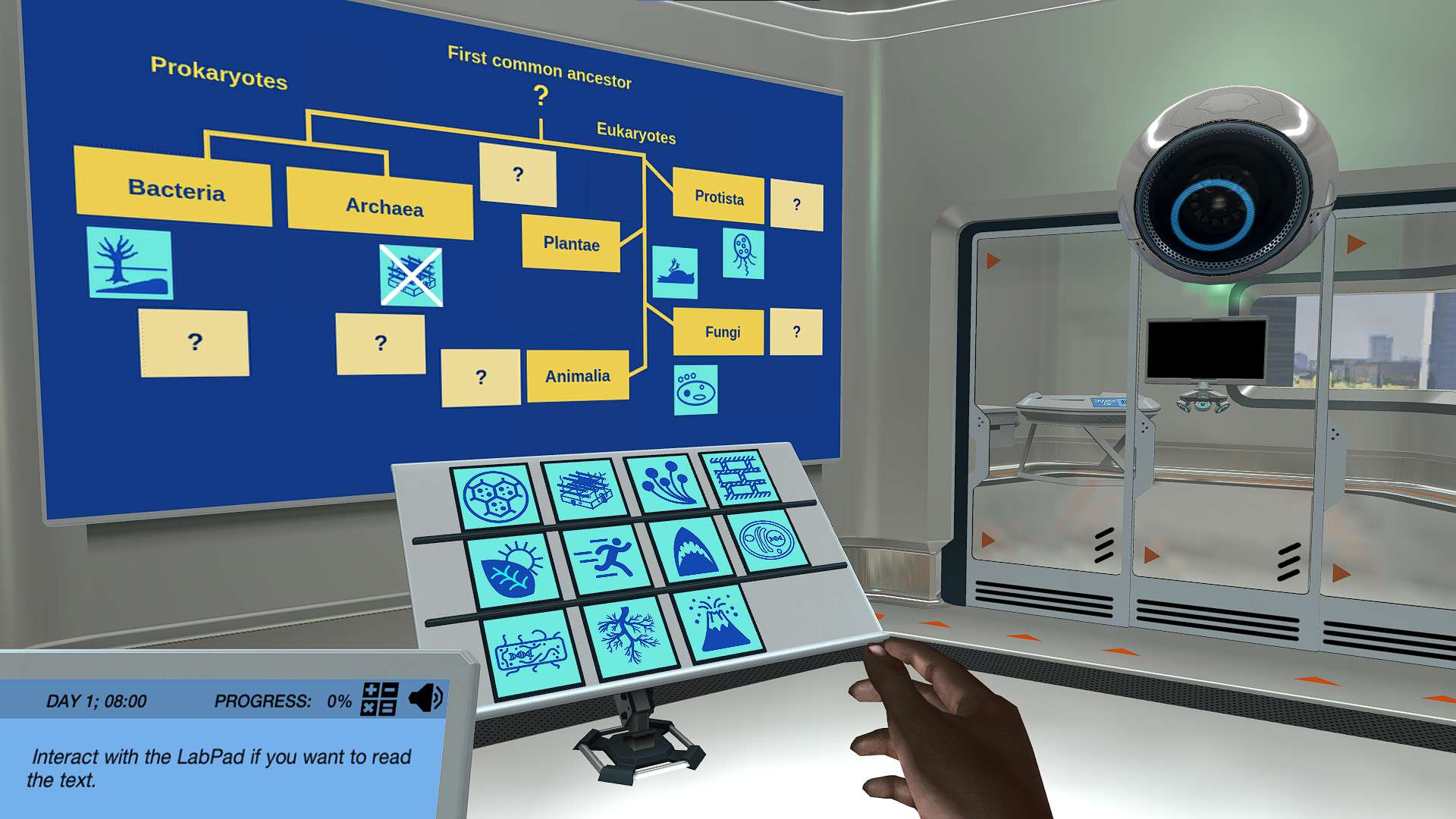Heading 1
Heading 2
Heading 3
Heading 4
Heading 5
Heading 6
Lorem ipsum dolor sit amet, consectetur adipiscing elit, sed do eiusmod tempor incididunt ut labore et dolore magna aliqua. Ut enim ad minim veniam, quis nostrud exercitation ullamco laboris nisi ut aliquip ex ea commodo consequat. Duis aute irure dolor in reprehenderit in voluptate velit esse cillum dolore eu fugiat nulla pariatur.
Block quote
Ordered list
- Item 1
- Item 2
- Item 3
Unordered list
- Item A
- Item B
- Item C
Bold text
Emphasis
Superscript
Subscript
About This Simulation
Build a taxonomic tree that unites all life on Earth by exploring the differences between organisms.
Learning Objectives
- Describe and compare the structural and functional organization of the major kingdoms of Life
- Explain the evolutionary relationships linking and separating the five kingdoms
- Predict the physiological and anatomical features of organisms within a kingdom and group
- Explain why viruses are not part of any kingdom
About This Simulation
Lab Techniques
- Taxonomy
- Phylogeny
Related Standards
- HS-LS4-3
- Biology 7.7 Common ancestry
- Biology 5.3 Classification of biodiversity
Learn More About This Simulation
This short, targeted simulation is adapted from the full-length “Evolution: Founding theories and principles” simulation.
What are the major kingdoms of life and how are they related to each other? In this simulation, we will answer this question by building a taxonomic tree of life and assigning different species to the kingdoms. Can you determine the key features of each kingdom, and assign the species?
Building the Tree of Life
Build your own taxonomic tree by comparing the biological differences that discriminate between the major kingdoms of life. To complete your tree, you’ll examine the fossil evidence for evolutionary divergence and assign the defining features to each kingdom. Discover the differences between the prokaryotes and eukaryotes, the bacteria and archaea, and the animalia and fungi kingdoms.
Assigning species
Once your tree is strong and clear, you’ll experiment with placing organisms into the different kingdoms. Discover the problems with placing these species into these kingdoms. Sometimes morphology alone can’t discriminate between species, for example, the venus fly trap is a plant but it is also a carnivore. In cases like these you’ll need to turn to the phylogenetic evidence to help determine the lineage of a species. However, spontaneous genetic transfer between species can make it difficult to follow the evolution of a species.
Examining troublesome species
Finally, attempt to fit the ancient species of viruses, which when following certain rules might not even be considered as alive, into the tree of life. By the end of this simulation you will know the major kingdoms of life and why not all species fit within these kingdoms.
For Science Programs Providing a Learning Advantage
Boost STEM Pass Rates
Boost Learning with Fun
75% of students show high engagement and improved grades with Labster
Discover Simulations That Match Your Syllabus
Easily bolster your learning objectives with relevant, interactive content
Place Students in the Shoes of Real Scientists
Practice a lab procedure or visualize theory through narrative-driven scenarios


FAQs
Find answers to frequently asked questions.
Heading 1
Heading 2
Heading 3
Heading 4
Heading 5
Heading 6
Lorem ipsum dolor sit amet, consectetur adipiscing elit, sed do eiusmod tempor incididunt ut labore et dolore magna aliqua. Ut enim ad minim veniam, quis nostrud exercitation ullamco laboris nisi ut aliquip ex ea commodo consequat. Duis aute irure dolor in reprehenderit in voluptate velit esse cillum dolore eu fugiat nulla pariatur.
Block quote
Ordered list
- Item 1
- Item 2
- Item 3
Unordered list
- Item A
- Item B
- Item C
Bold text
Emphasis
Superscript
Subscript
A Labster virtual lab is an interactive, multimedia assignment that students access right from their computers. Many Labster virtual labs prepare students for success in college by introducing foundational knowledge using multimedia visualizations that make it easier to understand complex concepts. Other Labster virtual labs prepare learners for careers in STEM labs by giving them realistic practice on lab techniques and procedures.
Labster’s virtual lab simulations are created by scientists and designed to maximize engagement and interactivity. Unlike watching a video or reading a textbook, Labster virtual labs are interactive. To make progress, students must think critically and solve a real-world problem. We believe that learning by doing makes STEM stick.
Yes, Labster is compatible with all major LMS (Learning Management Systems) including Blackboard, Canvas, D2L, Moodle, and many others. Students can access Labster like any other assignment. If your institution does not choose an LMS integration, students will log into Labster’s Course Manager once they have an account created. Your institution will decide which is the best access method.
Labster is available for purchase by instructors, faculty, and administrators at education institutions. Purchasing our starter package, Labster Explorer, can be done using a credit card if you are located in the USA, Canada, or Mexico. If you are outside of North America or are choosing a higher plan, please speak with a Labster sales representative. Compare plans.
Labster supports a wide range of STEM courses at the high school, college, and university level across fields in biology, chemistry, physics, and health sciences. You can identify topics for your courses by searching our Content Catalog.







.png?fm=jpg&w=700&h=400)
.png?fm=jpg&w=700&h=400)
.png?fm=jpg&w=700&h=400)





